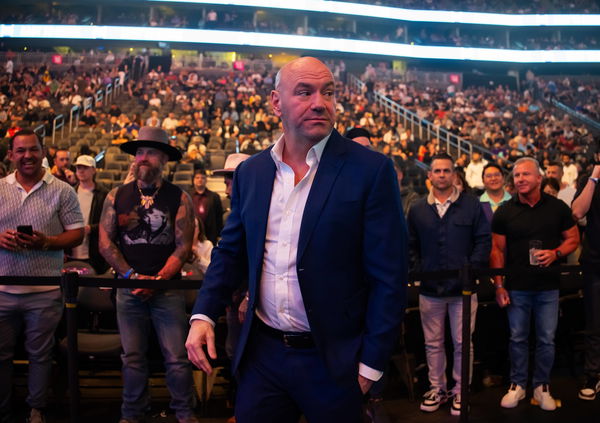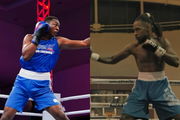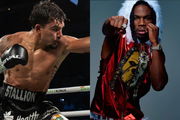

Two weeks ago, the combat sports world woke up to some major news. UFC and Paramount Skydance Corp. had signed a new exclusive broadcast deal. Starting in 2026, once its ESPN contract ends, Dana White’s UFC will partner with Paramount for seven years in a deal worth $1.1 billion annually. The agreement gives Paramount+ rights to exclusively air 43 annual UFC events across the United States. At first glance, this may seem routine. Fight promotions often seek broadcast partners that maximize reach. But a closer look suggests something bigger—a shift rooted in the long history of combat sports, from boxing’s early days to its modern role as the standard for major fight events.
Watch What’s Trending Now!
Many see the UFC-Paramount deal as the beginning of the end for pay-per-view (PPV). While crucial for MMA, the move carries equal weight for boxing. Just weeks earlier, on July 26, Top Rank ended its eight-year run with ESPN, bringing to an end linear TV viewing for boxing events. The debate over PPV’s future has surged drastically. With His Excellency Turki Alalshikh marking the dawn of a new era of no additional pay-per-view with the stacked November 22 card on DAZN, and Jake Paul‘s groundbreaking move with Netflix last year, many wonder if boxing is entering a new phase. It seems so.
ADVERTISEMENT
The PPV shake-up: Dana White rattles the fight game
Before diving into the nuts and bolts of pay-per-view, its future, and its impact on sports, let’s first look at the recent developments that set social media buzzing. On August 11, the news broke. Starting in 2026, all UFC’s big fights will stream only on Paramount+. CBS, Paramount’s free-to-air TV network, will also feature some of the biggest UFC cards. Right now, the UFC’s major events are locked behind pay-per-view (PPV). They often cost fans $70–$80 each. Under the new deal worth $7.7 billion, PPV will disappear from the UFC. Fans would be able to watch every event with just a Paramount+ subscription. No extra fee either. This includes:
- 13 numbered events (major cards like UFC 300, 301, etc.)
- 30 Fight Nights, i.e., regular events.

Imago
MMA: UFC 300 – Pereira vs Hill Apr 13, 2024 Las Vegas, Nevada, USA UFC president Dana White in attendance during UFC 300 at T-Mobile Arena. Las Vegas T-Mobile Arena Nevada USA, EDITORIAL USE ONLY PUBLICATIONxINxGERxSUIxAUTxONLY Copyright: xMarkxJ.xRebilasx 20240414_mjr_su5_008
But in boxing, the wheels had already begun turning weeks earlier.
ADVERTISEMENT
ADVERTISEMENT
Top Rank and Turki Alalshikh: Resetting the ring
On July 26, American boxing crossed a historic threshold. For the first time, the sport, long defined by larger-than-life heroes and epic fights, was left without a broadcast home. ESPN’s eight-year contract with Bob Arum’s Top Rank (TR) expired, ending boxing’s run on linear TV. Since 2018, ESPN has aired about 54 Top Rank events per year. Coverage extended beyond English to Hispanic and Latino audiences via ESPN Deportes and ESPN+. By February, Arum had already hinted the deal would likely not be renewed.
Top Stories
Keno Marley vs. Diarra Davis Jr. Stats Comparison and Prediction: Record, Age, Height, Reach, Weight, Knockout Ratio, and Rankings

Jahmal Harvey vs. Kevin Cervantes Stats Comparison and Prediction: Record, Age, Height, Reach, Weight, Knockout Ratio, and Rankings

Jake Paul vs. Anthony Joshua Stats Comparison and Prediction: Record, Age, Height, Reach, Weight, Knockout Ratio, and Rankings

Avious Griffin vs. Justin Cardona Stats Comparison and Prediction: Record, Age, Height, Reach, Weight, Knockout Ratio, and Rankings

Alycia Baumgardner vs. Leila Beaudoin Stats Comparison and Prediction: Record, Age, Height, Reach, Weight, Knockout Ratio, and Rankings

Signs of the sport’s next move came from veteran insider Rick Glaser. “So here it is, Top Rank has landed a deal with premium cable channel Starz,” Glaser wrote. He added further details: “11 boxing shows a year, 1 million per show, & Top Rank will retain the foreign rights.” Glaser noted the financial strain this deal might bring, including possible layoffs. Still, for him and many followers, it looked like a welcome restart.
Hints of transition, especially the move away from pay-per-view, surfaced just days before the Top Rank-ESPN split. They came from none other than His Excellency Turki Alalshikh, the man who once declared, ‘boxing is broken.’
ADVERTISEMENT
On July 17, Alalshikh announced the end of PPV for Riyadh Season and The Ring’s upcoming cards. “No More Pay-Per-View,” he tweeted. “Starting with our @ringmagazine show in November, all Riyadh Season & The Ring events will be free to DAZN subscribers. The PPV model has damaged boxing, and we will no longer support it. We are with the fight fans. 🤝🥊🔥”
‼️ BREAKING: Turki Alalshikh announces in partnership with DAZN that there will be no more PPV pricing for all Riyadh Season and Ring events starting with The Ring IV on November 22nd.
All events will be available for free for all DAZN subscribers. pic.twitter.com/6j7Sa0Hytl
— Ring Magazine (@ringmagazine) July 16, 2025
The shift begins on November 22 with a David Benavidez-Anthony Yarde title fight.
ADVERTISEMENT
Lest anyone forget. Next month, Dana White‘s new boxing promotion, launched in partnership with Riyadh Season, will stage what many call the fight of the era: Canelo Alvarez vs. Terence Crawford for the undisputed super middleweight crown. Unlike past blockbusters, this mega-event will stream on Netflix, not PPV.
To many, these moves look like a pattern. What sparked it? We don’t have to look far back to find the answer. Some argue that one landmark moment changed how fans watch boxing and combat sports overall.
ADVERTISEMENT
Jake Paul: ‘The Problem Child’ rewrites the rules
Whether Jake Paul is the sole catalyst for the shift away from PPV is up for debate. His family, including his brother and WWE star Logan Paul, insists he is. His fight last year against 58-year-old Mike Tyson drew criticism. Yet the November 15 event at Cowboys Stadium turned into a landmark moment. The Paul-Tyson bout smashed records. It generated $18.1 million at the gate, the biggest boxing or MMA gate in U.S. history outside Las Vegas. More striking was the audience. Over 108 million concurrent viewers worldwide. For the first time, a boxing mega-event streamed on Netflix instead of airing on PPV. Paul’s next fight, against Julio Cesar Chavez Jr., went back to PPV. But his upcoming exhibition with Gervonta Davis will once again land on Netflix.

Imago
Nov 15, 2024; Arlington, Texas, UNITED STATES; Jake Paul bows down to Mike Tyson during their fight at AT&T Stadium. Mandatory Credit: Kevin Jairaj-Imagn Images
So, is the story as simple as Jake Paul versus pay-per-view? Not quite.
ADVERTISEMENT
Back to the first bell
The flaws in the pay-per-view model were clear long ago. In 2007, boxing writer Thomas Hauser published an op-ed that quoted Ross Greenburg, then president of HBO Sports (2000–2011). At the time, boxing was fighting for relevance. UFC and MMA were on the rise. And both HBO and Showtime had started to televise them. HBO, once the leader in boxing, was slipping. The network leaned too much on fading stars, offered stale production, and ignored competitive matchmaking.
Meanwhile, PPV was expanding. But instead of helping, it reportedly damaged the sport. By pushing big fights behind a paywall, PPV shrank boxing’s audience and made fighters less visible on regular HBO. In 2006, boxing drew 3.7 million PPV buys, generating about $177 million. According to Ross Greenburg, the PPV model was ‘the biggest economic issue in boxing.’
ADVERTISEMENT
He said at the time, “I can’t tell you that pay-per-view helps the sport because it doesn’t. It hurts the sport because it narrows our audience, but it’s a fact of life. Every time we try to make an HBO World Championship Boxing fight, we’re up against mythical pay-per-view numbers.”
Greenburg pointed to the core problem. Promoters and fighters make their biggest profits on PPV, so they insist on it, even if it supposedly damages the sport’s reach. HBO, meanwhile, capped its PPV revenue. The network didn’t see massive profits from big fights. The money mostly flowed to promoters and fighters.
If a top fighter’s next bout was on PPV, HBO couldn’t easily feature him on its World Championship Boxing series. Promoters wanted the PPV revenue. As a result, many of the best fighters vanished from regular HBO cards, cutting off exposure to casual fans. In short, if HBO stopped offering PPV, promoters would either stage it themselves or find another network. The system fed on itself. PPV dominated because that’s where the big money was.
But laying all the blame on networks and distributors would be unfair. As PPV expanded, another problem grew: illegal streaming. Piracy undercut the very idea of exclusivity that PPV depended on.
The stream that stole the show
PPV thrived on fans paying steep prices, often $60-$80 or more, for exclusive access to major fights. If you wanted to watch, you had to buy it legally. But during the 2000s and 2010s, illegal streaming exploded. Pirated sites let fans see the same fights for free or at a fraction of the cost. This hit PPV revenues hard. Even fans who could afford the price often chose streams because they were easier and cheaper.
As piracy spread, PPV lost its gatekeeping power. Fewer people paid, and the sense of a ‘can’t-miss’ exclusive event faded. Big-money fights were no longer truly exclusive if anyone could stream them for free.
One of the sharpest critiques of illegal streaming came from His Excellency Turki Alalshikh. To fight the problem, he slashed PPV prices. Before the Anthony Joshua-Daniel Dubois title clash at Wembley, he told talkSPORT, “I dream of a PPV with a good price to make the fans happy and subscribe and get them to watch it legally. Usually when I see a high-priced PPV, a lot of people go and watch the fight illegally, and this is not healthy for boxing and the platform.”
But it hardly helped. So, is it really ‘Goodbye PPV’? Not quite, at least for now.
The sweet science of selling fights
For many hardcore fans, PPV carries a sense of nostalgia. It’s tough to forget that nearly 70 years ago, the model was born in the form of closed-circuit, or ‘theater television.’ The first major example came in 1948, when Joe Louis defended his title against Jersey Joe Walcott on closed-circuit telecasts.
Home pay-per-view followed in 1960. Floyd Patterson’s rematch with Ingemar Johansson saw 25,000 fans mail in $2 each to watch on TelePrompTer cable. A year later, their third fight drew 100,000 paid subscribers. By the Muhammad Ali era, PPV had started gaining mainstream traction. In the 80s, 90s, and early 2000’s it flourished. In 2023, after Showtime exited the boxing scene, Al Haymon’s PBC struck a deal with Amazon Prime. That partnership continues today, delivering a steady stream of high-profile cards.
For now, the pattern is clear. While many major promoters shift to subscription-based platforms, a select few still cling to the traditional PPV model for only the biggest events.
One of the strongest arguments for PPV has always been fighter payouts. Despite its drawbacks, the model made boxers some of the wealthiest athletes on the planet. The record-breaking 2015 showdown between Floyd Mayweather and Manny Pacquiao still stands as proof. Many remember the spectacle for the unprecedented paydays it delivered.

Imago
May 2.2015. Las Vegas NV. ( in Gld-blk trunks) Floyd Mayweather Jr. goes 12 rounds with Manny Pacquiao Saturday at the MGM Grand Hotel. Floyd Mayweather Jr. took the win by unanimous decision over Manny Pacquiao for the welterweight unification championship title..Photo by Gene Blevins/LA Daily News/ZumaPress Mayweather vs Pacquiao Fight night – ZUMAbl1_
The standard payout for fighters comes from a guaranteed purse. Take a $50 PPV buy for a star champion. That money doesn’t land directly in the fighter’s account. It passes through cable providers and the promoter first. The fighter then earns from the promoter’s share, usually, a guaranteed purse plus a cut of PPV sales. This setup is why PPV became central to fighter earnings. It was the only path to those massive paydays.
Thus, for fans, the shift away from PPV feels like a win. Big events will be available with a simple subscription. For fighters, though, it raises real questions about how their future paydays will look. The gloomy days of low payouts don’t seem too far away. For Dana White’s UFC fighters as well as boxers, it’s a reality they will soon have to contend with.
Share your thoughts in the comments below.
ADVERTISEMENT
ADVERTISEMENT
ADVERTISEMENT

